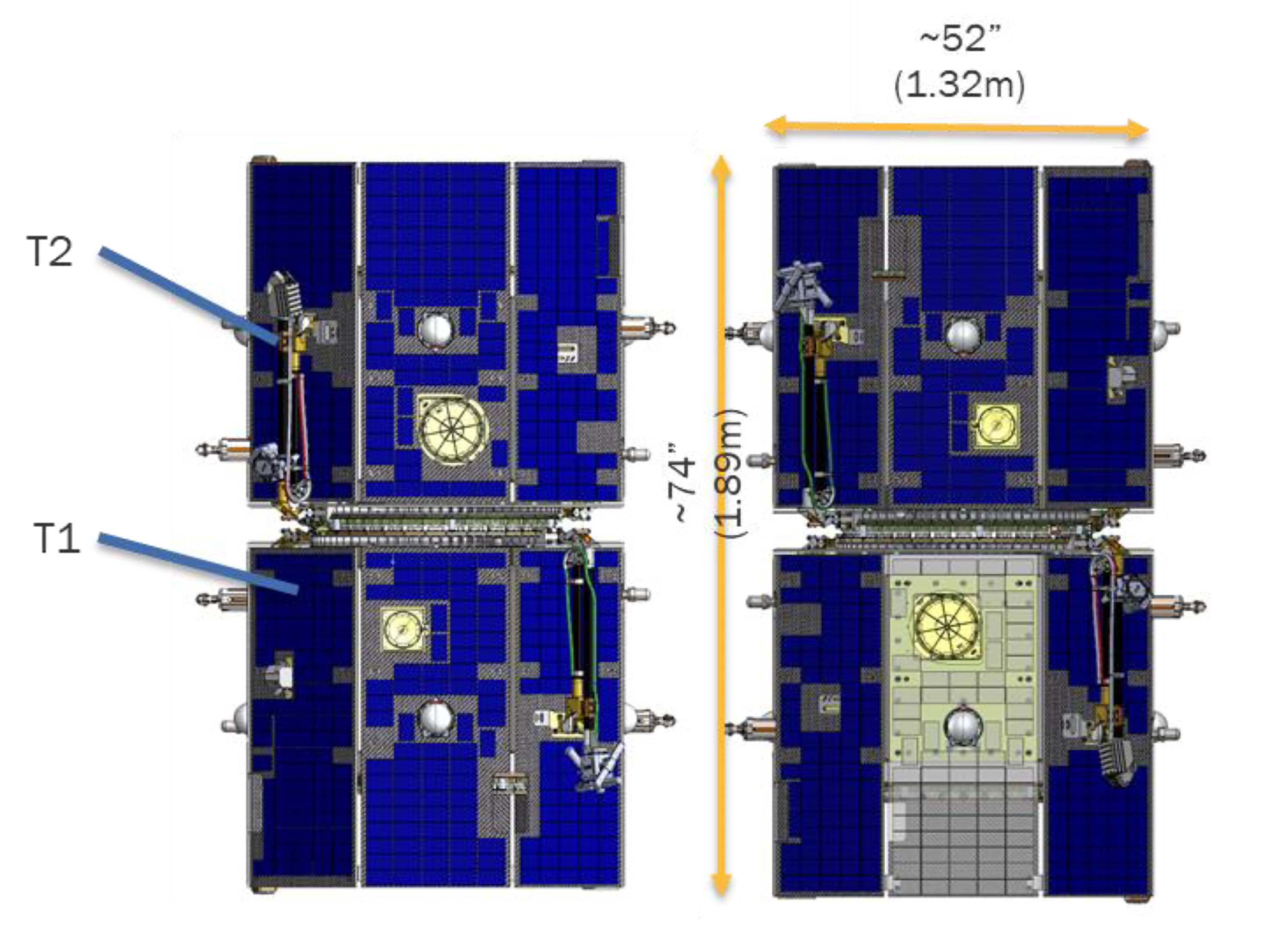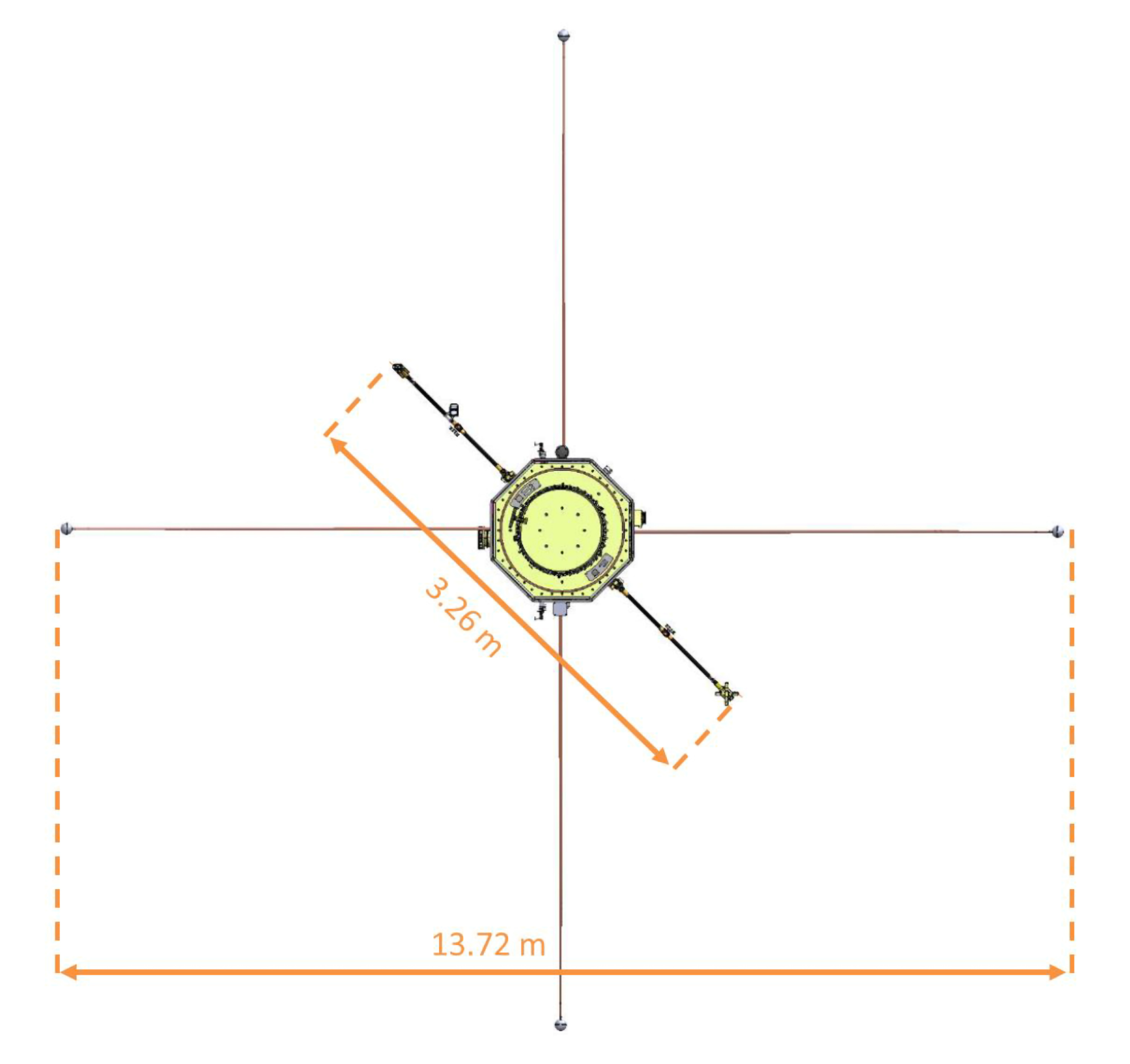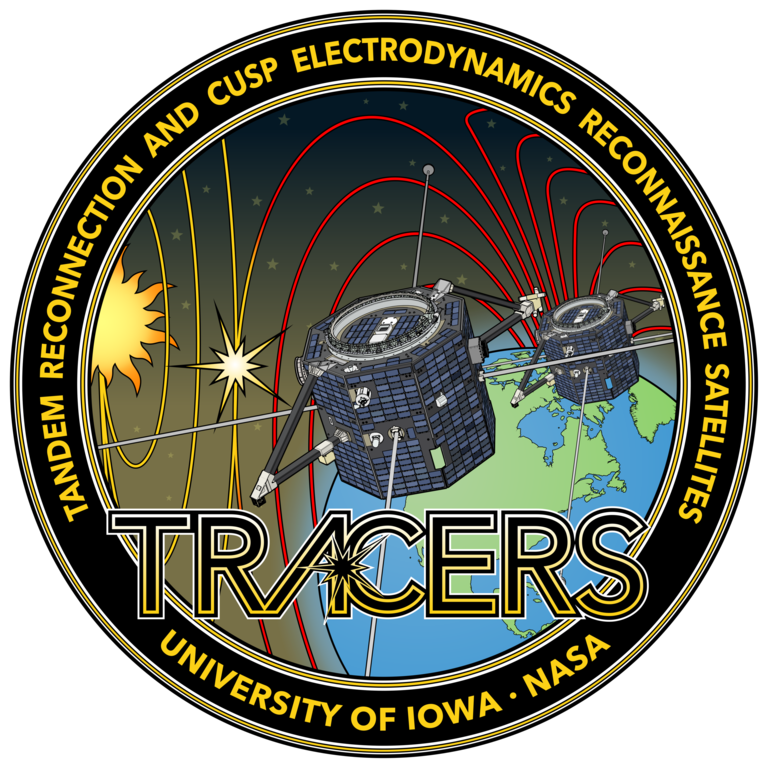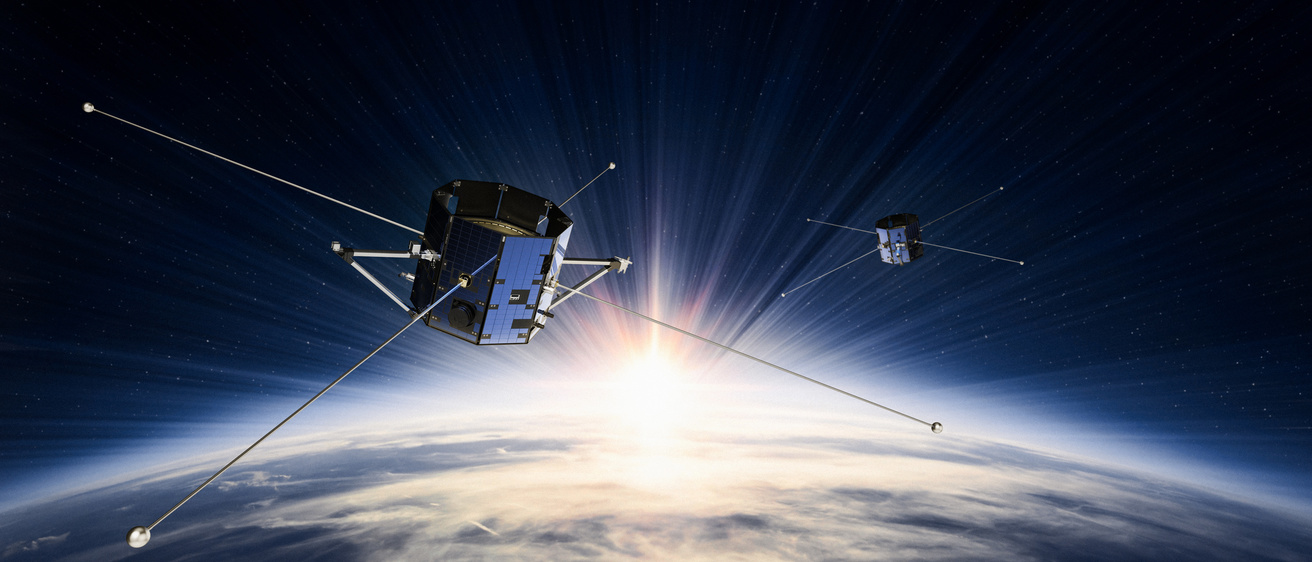Banner image credit: Millennium Space Systems
TRACERS consists of two nearly-identical spacecraft, termed T1 & T2, that take advantage of Millennium Space Systems’ ALTAIR core bus platform. The satellites are designed to be passively spin-stabilized and operate at a nominal rate of 10 RPM. Each spacecraft has a not-to-exceed launch mass of 200 kg. For TRACERS, the platform and overall vehicle design is optimized to provide substantial improvement in electrostatic and magnetic cleanliness to accommodate the instrumentation required for primary science objectives.
Credit: Millennium Space Systems
Primary structure
The primary structure of the TRACERS spacecrafts employs an aluminum honeycomb composite facesheet panel construction connected to a series of machined aluminum frames. The majority of spacecraft components are affixed to the top and bottom decks, while select elements reside on side panels due to required external fields of view (FOVs) and to optimize mass distribution for spin balance. The architecture allows for parallel Integration & Test (I&T) of the overall vehicle avionics and propulsion system, and provides flexibility in flow and access for testing.
Telecommunications
TRACERS Telecommunications (TT&C) use an S-band radio system for downlink/uplink with NASA Space Network (NSN) assets at a max rate of 6 Mbps and uplink rates of 32 kbps. The TRACERS S-band radio has been upgraded for secure uplink, grounding, and increased data rates. Patch antenna placement provides near omni-directional coverage.
Thermal control
TRACERS incorporates a cold-biased thermal control system (TCS), employing both passive and active techniques.
Electrical power
The TRACERS Electrical/Power System (EPS) is composed of eleven solar array (S/A) panels, lithium-ion batteries, and ALTAIR power management modules. Solar arrays are positioned on each of the 8 side panels and -Z decks for power generation. The spacecraft harness incorporate several unique features to ensure low magnetic properties and high electrostatic cleanliness for data & power lines.
Propulsion
TRACERS' Hydrazine propulsion system is used for orbit maintenance, T1 to T2 separation adjustments, slewing for local aggregate magnetic B-Field (LABF) vector alignment, and de-orbit.
Guidance & control
TRACERS' guidance and control mechanism adopts a spin-stabilized configuration, featuring periodic magnetic torque coil (MTC) modulated attitude mini-slews and long-term nutation/spin trimming. The spacecraft relies on a Kalman-filter estimator, integrating a sun sensor, ALTAIR standard inertial measurement units (IMUs) and three-axis magnetometers (TAM), and GPS receiver to facilitate accurate attitude determination. This controller governs the operation of three MTCs for standard maneuvers to maintain nominal spin rate.
Avionics
Millennium Space Systems’ heritage ALTAIR avionics manage Command & Data Handling (C&DH); thermal; Guidance, Navigation, and Control (GNC); propulsion; and communications.
Flight software
The Flight Software (FSW) for TRACERS tailors the Millennium Space Systems’ ALTAIR heritage bus architecture platform to accommodate TRACERS' specific requirements. This FSW undertakes critical tasks, such as device telemetry collection, fault detection and recovery, command formatting, routing, and downlink telemetry.
The TRACERS spacecraft integrates an onboard Fault Management system to ensure seamless nominal operations and proficiently manage fault detection and correction (FDC).
Launch configuration
The TRACERS vehicles are launched in a stacked configuration as shown below.
Each TRACERS spacecraft has a not-to-exceed launch mass of 200 kg.



